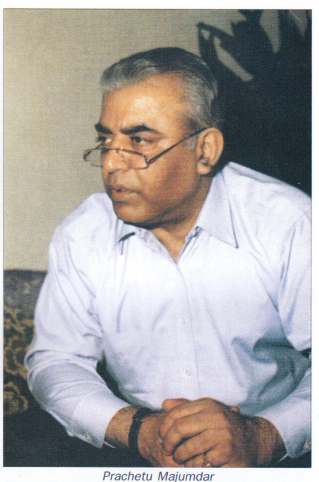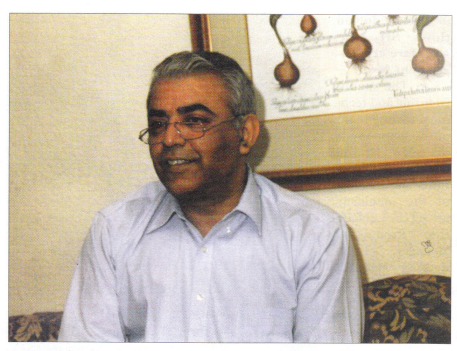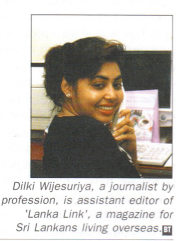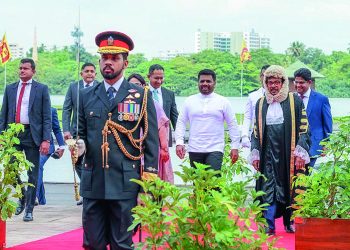Prachetu Majumdar, Managing Director of CEAT India,
was in Sri Lanka recently for the announcement of the ISO 9002 certificate award to their subsidiary company, Associated CEAT (Private) Limited. In an interview with Business Today, he said that the Sri Lankan workforce at Associated CEAT can be compared with workers anywhere in the world, and their housekeeping, quality and safety standards were better than those at their Indian outfit.
Q: What was the motivation for CEAT to start a joint venture in Sri Lanka?
A: CEAT is the second largest Tyre company in India, and we always had some global aspirations. Although we had sizable export business exports almost close to 50 million US Dollars a year, we also wanted to have a setup, a manufacturing facility outside In- dia. And we thought Sri Lanka was a country which had the natural resources i.e., some of the required raw materials to make a Tyre. It also has a vibrant domestic demand for Tyres which was largely being met by imported Tyres. And we felt that culturally Sri Lanka was close enough for us to work as we are used to. So, basically, I can say raw material availability, strong domestic demand, cultural similarity were the reasons. Finally, I would say that we did expect exporting out of Sri Lanka to be much easier than exporting out of India.

Q: Could you tell us briefly, how you made initial contact with Sri Lanka?
A: Actually, I came in 1991, as part of a delegation from the Association of Chambers of Commerce in India. I came with a business team and met local industrialists. One of them happened to be Thilak de Zoysa of AMW. He and I spent some considerable time dis- cussing their existing business in Sri Lanka and the prospects of that business. One thing led to another, and we decided that there were enough synergies between our businesses for us to come to Sri Lanka and set up a joint venture, which to start with we decided, will be for the domestic market and once we stabilise we will look at the export market.
Q: Did you have any reserva- tions prior to coming to Sri Lanka?
A: At the beginning there were some, as not many Indo-Sri Lankan joint ventures have been successful before this. In those days, I am talking of early 1991, the relations between the two countries were somewhat strained. There was a little apprehension in our minds as to how welcome we would be. But today, I would say unreservedly that we are wholly satisfied with Sri Lanka, and you would see that this company will make a lot of investment in this country. There is also a possibility that other companies in the RPG (RP Goenka) group will look positively at investing in Sri Lanka. RPG as a group is in the power business, consumer goods, tele- communications etc.
Q: Since Associated CEAT has now got the ISO 9002, what do you see as their future here in Sri Lanka and abroad?
A: We are very proud to receive the ISO 9002 certificate. We are the first Tyre company in this country to receive it incidentally we are also the first Tyre company in India to receive ISO 9002. But I must say that the ISO standard is a very small step in what we are trying to achieve, which in western parlance is called total quality management, which is a continuing thing it does not end with getting a certificate. But ISO 9002 will give us a lot of credibility in the international market, As for the future, our sales this year are likely to be anything be- tween 360 to 380 million. We want to quickly get to a figure of around Rs 1 billion in sales which we will achieve in two years’ time. Eventually we want to build it into a world class and world size plant, where we will be a major supplier to the domestic market and may be an equal amount of our business will be for export. Associated CEAT has the potential to become a Rs 3 billion business in 5-6 years’ time.
“Associated CEAT has the potential to become a Rs 3 billion business in 5-6 years’ time.”
Q: What is your arrangement with Associated Motorways?
A: This is a three-way joint venture between CEAT of India, AMW of Sri Lanka and NDB of Sri Lanka. It is a closely held company. We have not gone public as yet but when we enter upon our major expansion plan in future, we intend going public. CEAT holds 60 per cent of the company. We have majority control, and the day-to-day operation is looked after by the CEAT team. The Chairman of the Company is Ajita de Zoyza who is also Chairman of AMW and then we have Thilak de Zoysa on the board, and I am on the board. All the guidance in local matters is provided by another director.
Q How do you think Sri Lankans fare at management level?

A: The manufacturing and technical management of the company is overseen by an expatriate from India and the rest of the managers are all Sri Lankan, the Production Manager, Engineering Manager etc., are Sri Lankans. Similarly, for marketing, we have one person from India who is responsible for the laying down of broad concepts, but the real selling responsibility is with the Sri Lankans. The same applies to commercial management. Our purchasing, ac- counts, all are done by Sri Lankans. We have been very satisfied with the performance of the locals not only at managerial level, but supervisory and workman levels also.
Q: What is your opinion of the Sri Lankan workforce when compared to the Indian workfree?
A: We have found them very co- operative. We had given a lot of thought to recruiting and training people. Particularly at the work- man level, we did not hire people who had previous industrial experience. We hired fresh people who are either diploma holders or had done their schooling or some specialized training. In terms of productivity, quality awareness, safety awareness the workmen of Sri Lanka can be compared with those any- where in the world, not just India. Prachetu Majumdar
Q: Have you had any experiences of Labour unrest?
A: We have heard of a spate of Laboure unrest in the recent past, but we have had no such experiences. The workers have the right attitude. I would say that the ISO 9002 would not have been possible unless the workers, supervisors, the managers worked together as a team. Initially, we had problems such as absenteeism, high Laboure turnover etc., but we worked with them and have now settled on a team who are very dedicated, very committed and I can tell that the housekeeping standard, the quality standard, safety standard etc., are actually better than those of our Indian organization.
Q: What is the cost of production of a Tyre in Sri Lanka as opposed to India?
A: The raw material costs in Sri Lanka are lower than those in India, mainly because import duties are less, and two of the major raw materials are available here i.e., rubber and nylon. Labour costs are marginally lower than at least CE- AT’s cost in India, because we are in the Bombay region where the Laboure costs are higher. However, in Sri Lanka there are two costs which are very high these are the costs of power and money. If we have to compete internationally, the government will have to look seriously at helping the export industry in containing these costs.
Q: As an exporter, what do you think of Sri Lankan bureaucracy and red tape as opposed to India?
A: When we first came here, we had a lot to do with BOI and our experience with them was extremely good. As for the Sri Lankan bureaucracy and red tape, there is no comparison between here and India Sri Lanka any day is way ahead. But then India is not the right country to benchmark. If Sri Lanka really wants to attract foreign investment, it has to benchmark itself perhaps with Singapore. In the case of India, despite all the hassles people come there because of the large market- something Sri Lanka does not have.
Q: I understand you have some problems with unlawful dumping in the market?
A: This is not a problem directly related to the government. We have observed that in Sri Lanka, there is a lot of under in- voicing of Tyres going on. That means unscrupulous dealers import Tyres at a price which is not its true international price. When that happens the government loses revenue, because duty is charged on the actual invoice. We also get badly hit in the market by this, because these individuals sell these tyres at a much lower price. We have brought this to the attention of the Government. Some steps have been taken but I feel stronger measures have to be adopted.
Q: What are the constraints you face in selling a tyre manufactured in Sri Lanka? And what are the advantages you have?
A: We have less constraints in selling it in the export market, because the CEAT brand name is well accepted and known. However, in Sri Lanka, one thing I have found which came to us as a surprise was, when we first started producing the tyre here, we tried to promote the idea that it was a local tyre, to instill national pride. But to our surprise we found that locals prefer imported brands. In Sri Lanka, I think there is a fascination for imported goods. This, we took a little time to figure out. Although we told them that this is the same CEAT tyre we are producing in Bombay, they still believed initially that this couldn’t be as good as the imported one. I think it is a mindset issue here. Apart from that we have had no real problems. But it is a little sad that we have to underplay the fact that the tyre is made in Sri Lanka.

Q: Can you explain what standards you have to maintain to keep the ISO 9002 certificate?
A: The ISO certificate ensures that our systems are always in or- der. We promise the customer a certain level of quality. What this means is that we would have an independent audit team who visits the factory. They will go through the system every six months and if they find any slippage in quality, they will give us some time to correct it and if we still don’t come up to standard we will be disqualified and that is something that keeps us on our toes.



